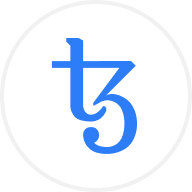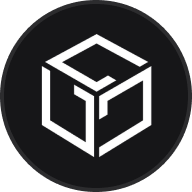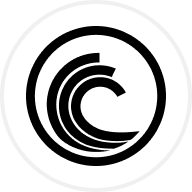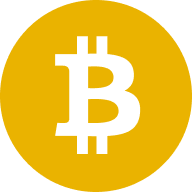Sandbox – це децентралізований віртуальний світ на блокчейні Ethereum, де ви можете створювати, ділитися та монетизувати воксельні активи та ігри. Sandbox – це play-to-earn P2E платформа на основі Ethereum, творці якої мають на меті створити захоплюючий метаверсійний досвід без централізованого управління.
Традиційні воксельні ігри для побудови віртуального світу, такі як Minecraft, є централізованими іграми, де користувачі не мають права власності на свої творіння або ігровий процес. Sandbox вирішує цю проблему, дозволяючи гравцям створювати і монетизувати ігровий досвід на блокчейні Ethereum.
На відміну від традиційних ігор, де ігрові активи існують на сервері відповідної компанії, кожен об'єкт у метавсесвіті Sandbox вільно торгується невзаємозамінним токеном (NFT) у блокчейні Ethereum, що дає користувачеві повне право власності на ігровий об'єкт. Таким чином, творці в The Sandbox мають справжнє право власності на свої творіння через ці NFT. Крім того, вони отримують винагороду за свою участь за допомогою SAND, утиліті токена мережі.
Оскільки екосистема The Sandbox працює на основі блокчейну Ethereum, всі смартконтракти, перекази NFT, криптовалютні транзакції та ведення обліку здійснюються за допомогою мережі Ethereum. Це робиться за допомогою трьох основних продуктів, які підтримують ці функції і допомагають користувачам створювати свій віртуальний світ. Це VoxEdit, Marketplace та Game Maker.
VoxEdit – це безкоштовний пакет для воксельного моделювання, який дозволяє користувачам створювати і анімувати 3D-об'єкти. Ці об'єкти можна експортувати на ринок The Sandbox як ігрові АКТИВИ. Маркетплейс – це веб-магазин, який об'єднує покупців і продавців, що торгують NFT-активами. Він дозволяє користувачам завантажувати, публікувати і продавати свої АКТИВИ як токени ERC-721 і ERC-1155.
Нарешті, Game Maker дозволяє користувачам додавати ігрові механіки до своїх воксельних активів за допомогою візуальних вузлів сценаріїв, що дозволяє користувачам створювати захоплюючий ігровий досвід на придбаній ними ділянці LAND. Користувачі також можуть використовувати Game Maker для розміщення воксельних активів у своїй пісочниці LAND. У LAND також можна проводити конкурси та заходи, монетизувати активи, грати і створювати ігри, голосувати в метапросторі The Sandbox в управлінні і здійснювати стейкінг токенів SAND. Максимально доступно 166 464 LANDS.
SAND: нативний токен Sandbox
SAND – це токен ERC-20, який використовується, зокрема, для транзакцій всередині платформи. Гравці витрачають SAND, щоб отримати доступ до ігор та грати в них, купувати обладнання та налаштовувати свої аватари. SAND також можна використовувати для придбання активів і LAND.
Ще одним нативним токеном метапростору The Sandbox є токени ASSET, які можна купувати і продавати за SAND. Користувачі можуть створювати і продавати токени ASSET на Маркетплейсі як NFT, що представляють ігрові предмети.
SAND також функціонує як токен управління. Власники можуть голосувати за рішення щодо майбутнього The Sandbox через децентралізовану автономну організацію (DAO) платформи.
Також можна здійснювати стейкінг SAND, що дозволяє отримувати пасивний дохід. Крім того, стейкінгові токени SAND можуть приносити дохід у вигляді цінних дорогоцінних каменів і каталізаторів, які використовуються для створення ASSET.
Ціна і токеноміка SAND
SAND – дефляційний токен з обмеженою пропозицією в 3 мільярди. Із загальної кількості 360 мільйонів SAND були виділені для продажу на стартовому майданчику, 17,8% були збережені для раунду первинних продажів, а 4% токенів SAND були розподілені під час стратегічного розпродажу в липні 2020 року.
З решти пропозиції SAND 12% токенів було передано фонду Sandbox Foundation, 25,82% було виділено в резерви, 19% токенів SAND було розподілено між засновниками і командою, а 10% токенів SAND було виплачено радникам.
Розподіл насіннєвого капіталу і стратегічного продажу має обмеження на 12 місяців, після чого 20% токенів розблоковуються кожні пів року.
Доходи, отримані від The Sandbox, розподіляються між чотирма зацікавленими сторонами, щоб забезпечити постійну підтримку екосистеми гравців і творців. Ці токени розподіляються в фондовий пул, пул стейкінгу, казначейство компанії і резерв компанії.
Про засновників
Проєкт Sandbox був заснований у 2012 році Себастьяном Борже (Sébastien Borget), який зараз є операційним директором Sandbox, і генеральним директором Артуром Мадридом (Arthur Madrid).
Створена Pixowl, компанією з розробки мобільних ігор у Сан-Франциско, Sandbox спочатку була запущена як 2D мобільна гра, яку завантажили понад 40 мільйонів людей.
У січні 2018 року Sandbox вирішила розробити 3D-версію гри на Ethereum. Крім того, команда Sandbox хотіла надати гравцям 100% право власності на їхні ігрові предмети та можливість монетизувати свій ігровий процес та активи. Пізніше, у серпні 2018 року, Animoca Brands, провідний розробник блокчейн-ігор, придбав Pixowl.
Для фінансування свого бачення Sandbox залучила $6,8 млн за допомогою трьох продажів токенів у 2019 та 2020 роках. Крім того, компанія оголосила про виділення гранту в розмірі $2 млн для авторів на створення і публікацію воксельного мистецтва на платформі Sandbox.













